Africa
Connect with the great kingdoms and rich material culture of Africa through 300 objects from 21 countries.
Main Level
Included with Admission
Above: Kota Guardian Figure, Congo. 29-12-236
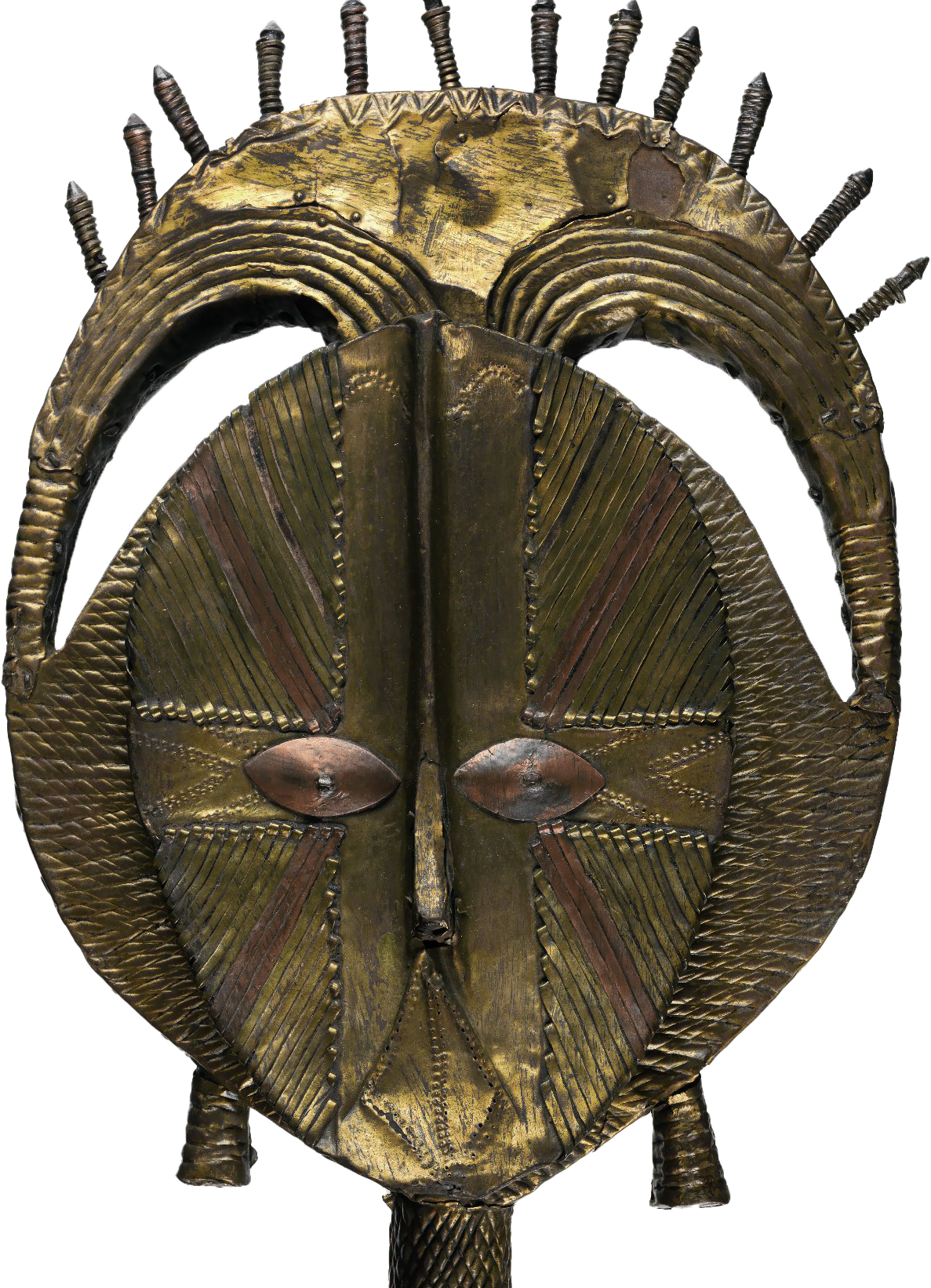
Connect with the great kingdoms and rich material culture of Africa through 300 objects from 21 countries.
Main Level
Included with Admission
Above: Kota Guardian Figure, Congo. 29-12-236

Celebrate the richness and diversity of Africa, from art and language to spiritual practices and family and gender relations. Learn from its complex organization of social, economic, and political systems.
Above: Kota Guardian Figure, Congo. 29-12-236
Trace the journey from maker to museum to consider why, where, and how objects were made. Learn how these objects were used in daily life, on special occasions, or in religious ceremonies, and why they were meaningful to the cultures that produced them.
As with most Western museums, the foundational objects of this collection were created in, or taken out of, Africa during periods of enslavement and colonialism. Most of the Penn Museum’s Africa collections were acquired by curators, ethnologists, archaeologists, antiquarians, or travelers in the late 19th or early 20th centuries. The objects on display in the Africa Galleries were selected to deepen the conversation about African material culture, its representation in Western museums, and its connection to the African Diaspora.
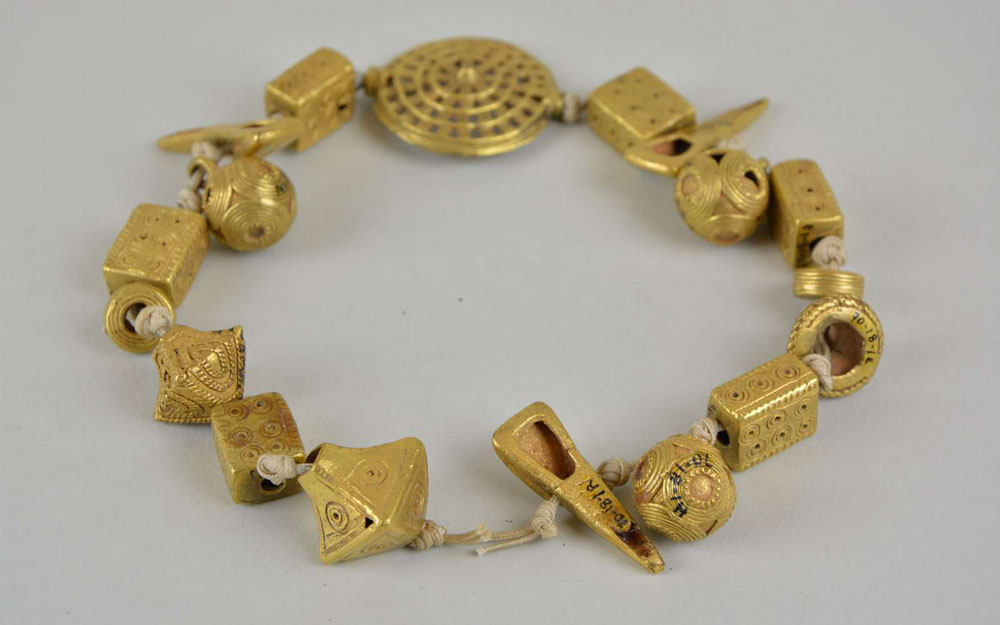
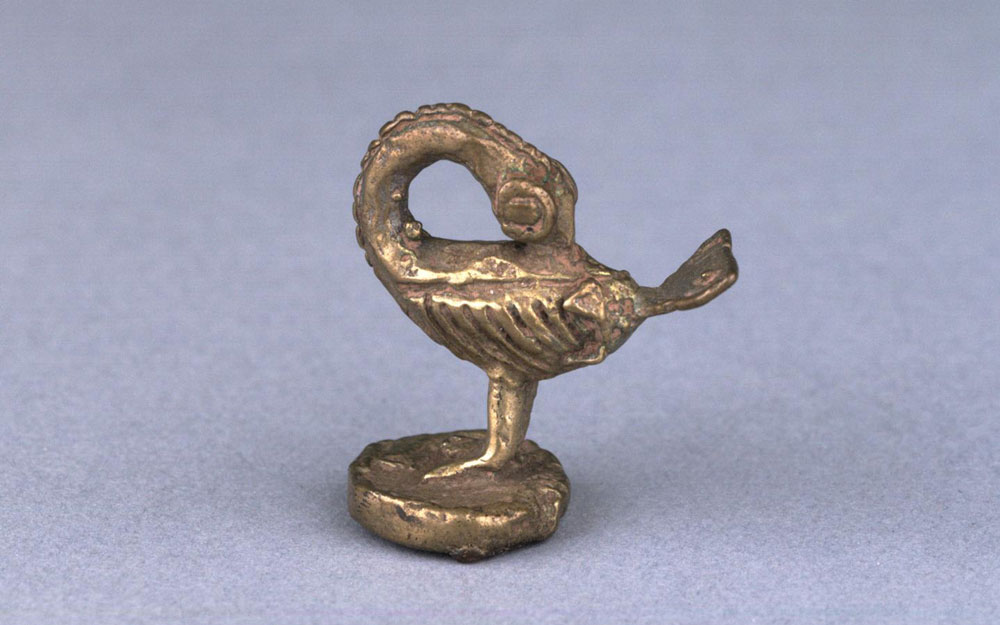
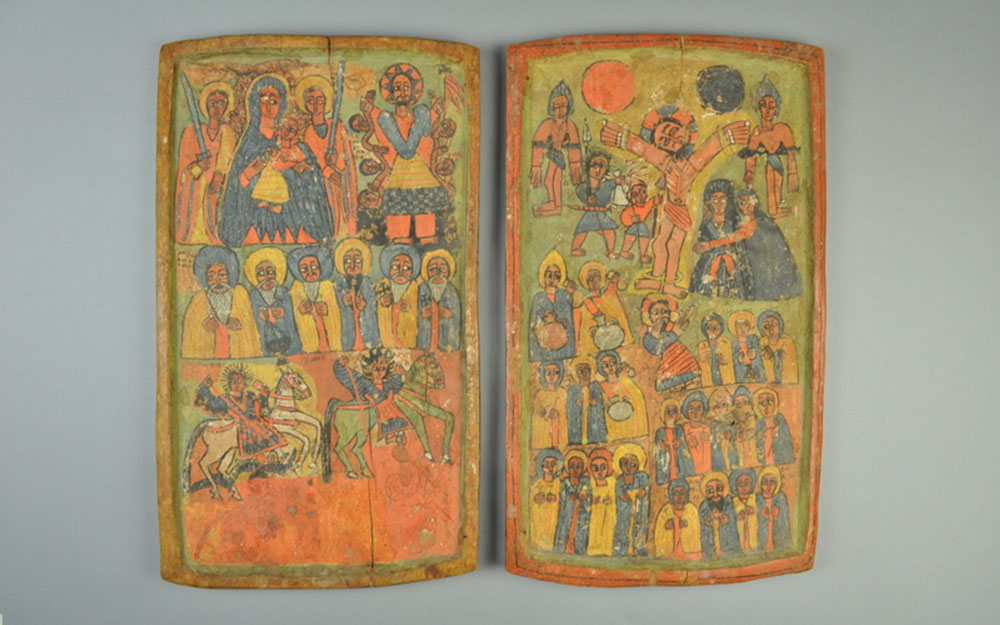
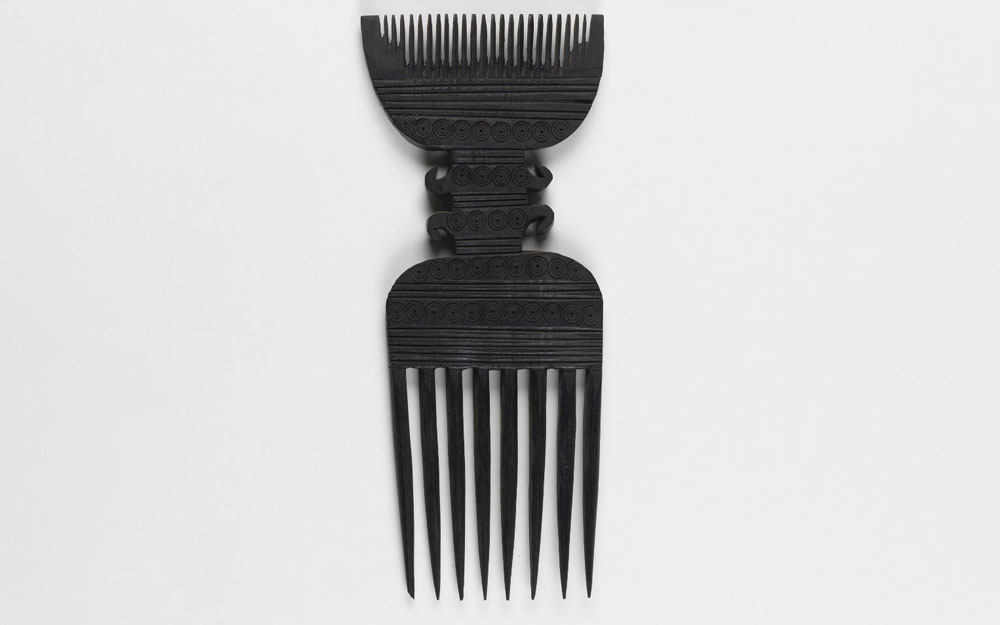
Goldsmiths in Ghana have made beads in the Asante tradition of lost wax casting for generations. These beads were from the artist's extra stock. His son sold them to the Museum nearly 40 years after they were created. 70-18-1A - R
These gold weights reflect the customs of the Asante people. Older weights were based on geometric patterns. Later weights include adinkra synbols—used to decorate textiles and pottery—and everyday objects. AF2458
Brightly-colored Ethiopian paintings decorate Christian Orthodox churches, religious texts, and protective amulets. These paintings on the right may illustrate scenes from the Garima Gospels—the bible used in the Ethiopian Church for over 1,500 years. 2015-30-7.1
A double-sided shanua (comb) serves two purposes in one. The long teeth part hair, and the short teeth smooth it out while it is braided. AF3929
Tukufu Zuberi, Ph.D., shares the process of the creation of the Africa Galleries in conversation with African museum directors, curators, and contemporary artist in the Diaspora and Africa. Current debates about reparations and restitution have led to ongoing conversations about the return of artifacts to Africa. The galleries are designed to deepen the conversation about African material culture and its representation in Western Museums. “So anything done to uplift the culture, the history of the people here is done for the benefit of the world,” says Chief D.U. Edebiri, the Esogban of Benin Kingdom.
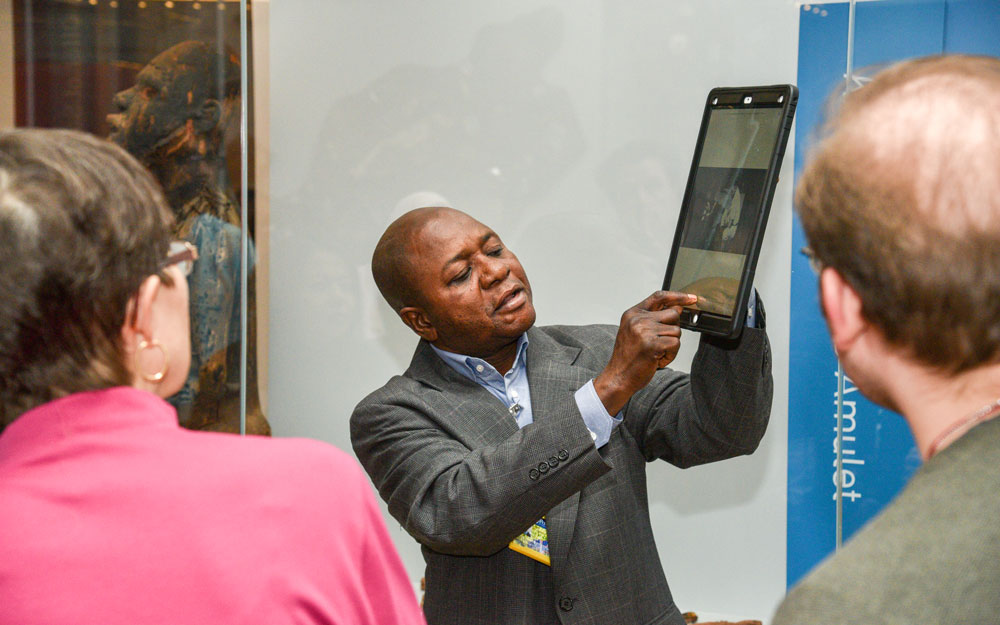
Tours
No advance registration is required and many tours are included with Museum admission. Tours begin in the Main Entrance.
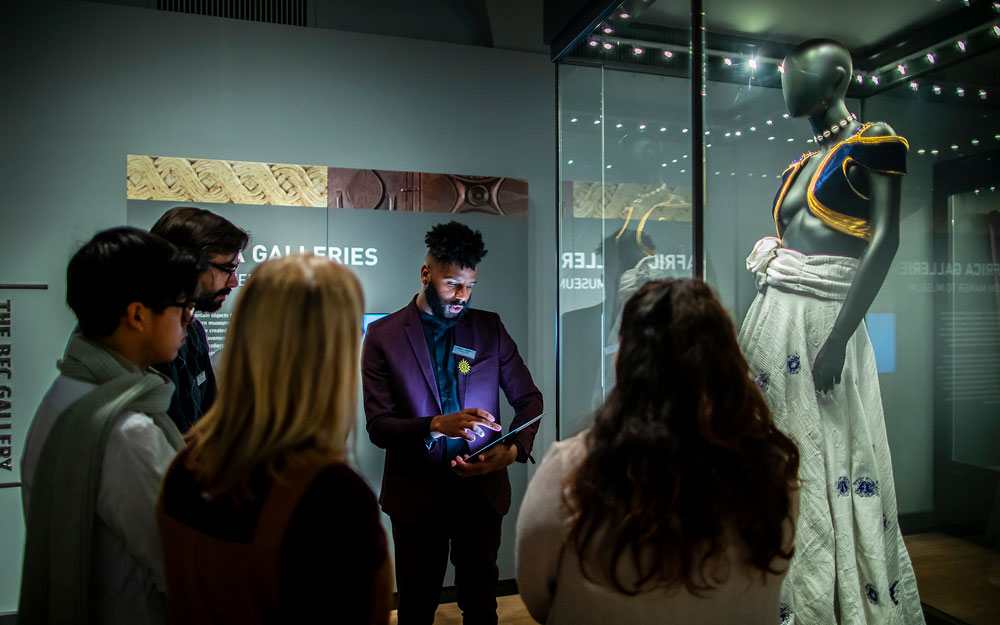
Also on display are contemporary art-works commissioned as direct responses to the historical objects in the collection. The installations include Dress, created by Breanna Moore and Emerson Ruffin, Wall of Memory for an Ancestral Palace by Jorge Dos Anjos, and Presence of a Fundamental Absence by Muhsana Ali and Amadou Kane Sy. Photo by Eric Sucar.